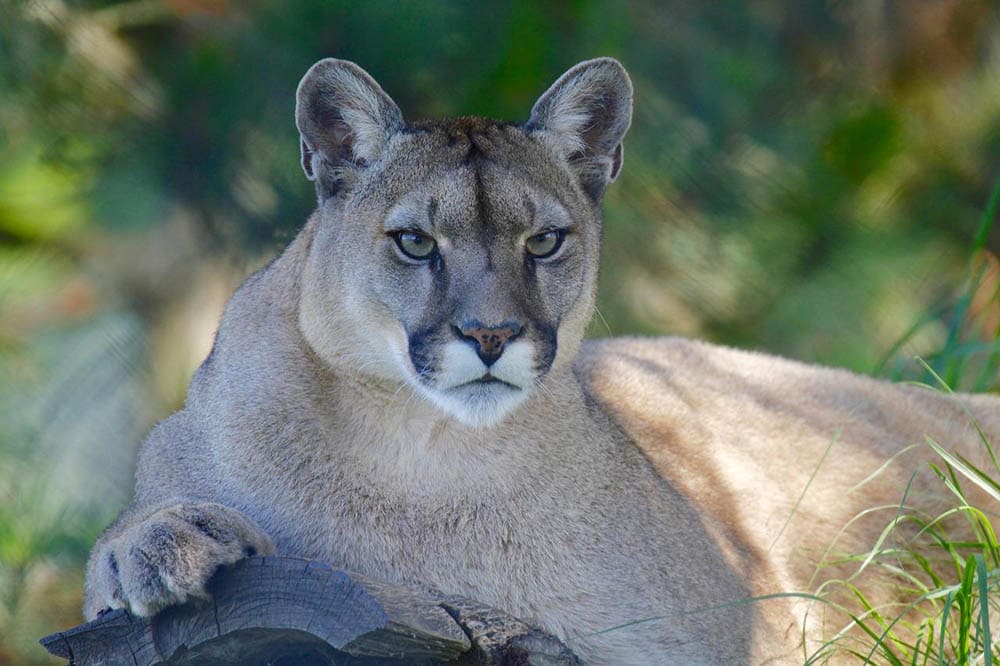We sometimes forget that we share the land with a wide array of wildlife. Maybe it’s our disconnect with nature or the fact that these animals are very good at hide and seek. Cats have a sneaky way of moving around without being seen, so it’s easy to forget that they’re present.
We hear all over the news when a hiker or camper interacts with wildlife. Sometimes the ending is good, and sometimes, not so much. The likelihood of coming across a wild cat in California is small but not impossible, because there are indeed wild cats in California.
In this post, we’re talking about which wild cats you can expect to hear about, and maybe even see, in California.
Which Wild Cats Live in California?
1. Bobcat
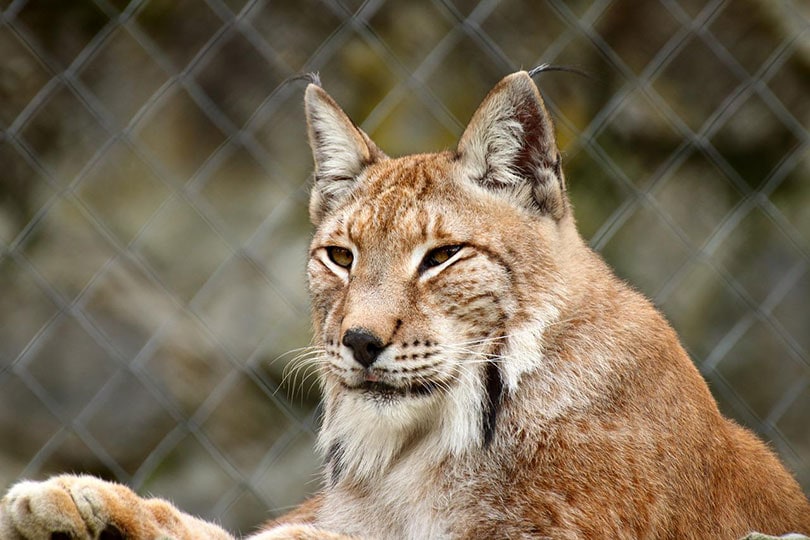
| Scientific name | Lynx rufus |
| Size | 20 pounds |
The bobcat (Lynx rufus) is a small, thick wild cat that roams much of North America, including California. Most people believe bobcats don’t have tails, but this is false. They have short, stout tails that look “bobbed, ” where the name originates.
Bobcats have spotted coats with black bands on their legs and faces, but this patterning can vary from cat to cat. The ears are pointed and have little tufts on the tips. This will be your biggest indicator that you’re looking at a bobcat, along with their size.
Bobcats are small compared to other large wild cats. They only weigh about 12–25 pounds. Still, they look pretty big compared to your average house cat.
Bobcats are a part of the Felidea family, the same family that lions, tigers, and domestic cats belong to. You can find these cats in bear country and on the edge of urban settlements at night. It’s unlikely to see a Bobcat during the day since they’re night owls.
- A bobcat is about 2x the size of a domestic cat.
- A bobcat can run up to speeds of 25–30 miles per hour.
- Bobcats can leap up to 12 feet in the air to catch prey.
- Bobcats are skilled swimmers.
- The bobcat is a type of lynx.
2. Mountain Lion
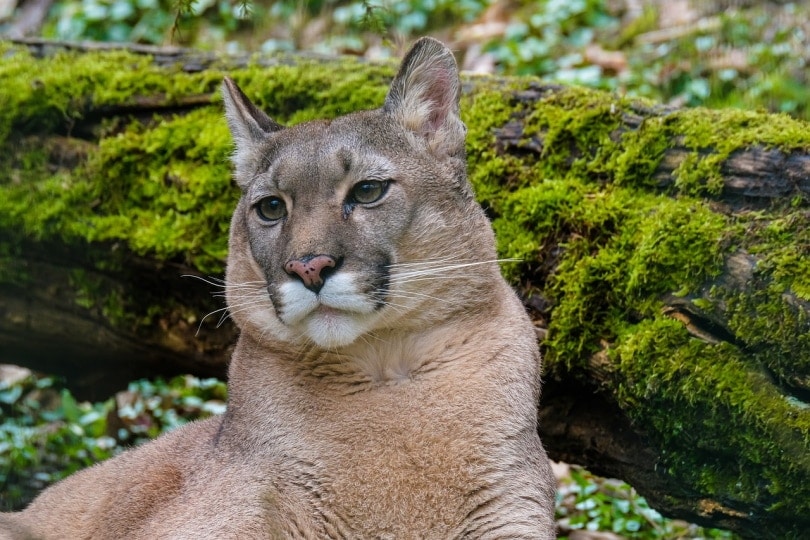
| Scientific name | Puma concolor |
| Size | Males 130-150 pounds, Females 65-90 pounds |
The Mountain Lion (Felis concolor or Puma concolor) is also a cougar or puma. Who knew these cats were one and the same?
These cats’ Latin name means “cat of one color,” relating to their uniformly gray to reddish-tan coats. Unlike bobcats, mountain lions have long tails with black markings on the tip. The muzzle and chest are white, and the rest of the face has black markings.
You can find mountain lions across California and everywhere else in the Western Hemisphere. Mountain lions often make their dens in rocky parts of the mountains, thickets, and under uprooted trees. They prefer to be left alone, so locating them is hard. They don’t like to be seen by humans. This is probably a good thing since the males are highly territorial.
Male mountain lions can dominate an area from 50–150 square miles. The city of Seattle is 92 square miles, so that should give you an idea of how territorial they really are.
Despite their solitary lifestyle, mountain lions are quite affectionate toward each other. The following video gives you some insight into the secret lives of mountain lions.
- A mountain lion can jump up to 18 feet high from a sitting position.
- Mountain lions aren’t social creatures and usually only meet up for mating.
- Of all the big cats, the mountain lion is most like a domestic house cat.
- Mountain lions can’t roar, but they can scream like a human.
- Mountain lions are also called “fire cats.”
3. Domestic Cat
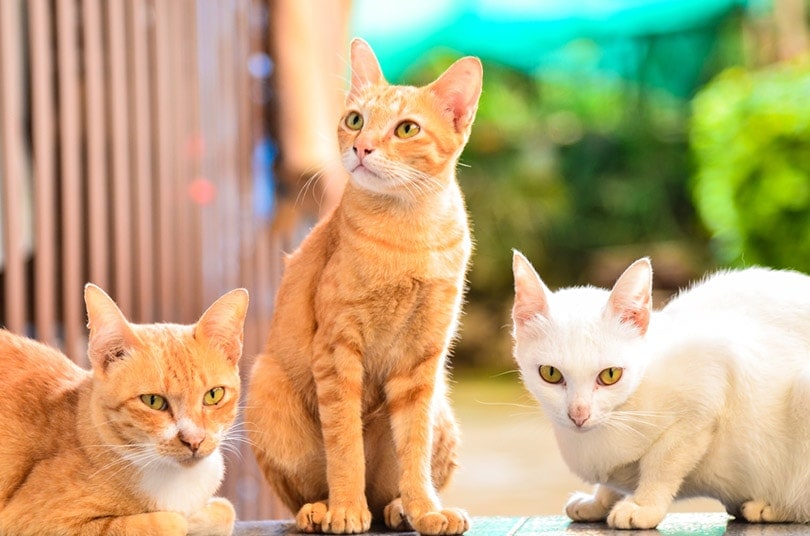
Yes, the domestic cat earns its place on this list. But why? Aren’t domestic cats, well, domesticated?
The truth is that every small cat has a different level of socialization. Pet and stray cats are well-socialized animals. They’re used to human touch, behavior, and smell.
On the other hand, feral cats are cats that have never experienced human interaction. Or, they may have experienced human interaction in the past, but that socialization dwindled.
Feral and strays are wild cats because they live outside. They hunt for food, aside from the occasional snack from a friendly human. They live outdoors, mate with other cats, and risk predator attacks like from wild cats.
The biggest downside to this is that domestic cats are an invasive species and can be detrimental to surrounding wildlife. That’s why neutering your pet and the TNR (trap-neuter-release) method are important!
- Domestic cats have endured little physical change throughout evolution.
- The earliest association between cats and humans dates back to 9,500 years ago.
- Ancient Egyptians placed mummified mice next to their mummified cats to provide food for them in the afterlife.
- The Catholic church considered cats demonic during the Medieval period.
- A cat’s spinal column is held together by muscles instead of ligaments, giving them superior flexibility.
Staying Safe Around California’s Wild Cats
As we mentioned, mountain lions and bobcats prefer to avoid human contact and are usually active at night. However, because so many Californians enjoy hiking and outdoor activities, it’s essential to know how to stay safe around wild cats. In addition, large felines often live near densely populated human locations, making the chances of an encounter possible even for those who don’t deliberately enter wilderness areas.
People living in rural areas need to be more proactive about keeping wild cats away, not as much because they pose a threat to humans but because they will prey on livestock and pets if other prey is scarce. Human attacks by mountain lions are rare, with only six documented fatal attacks since 1890.
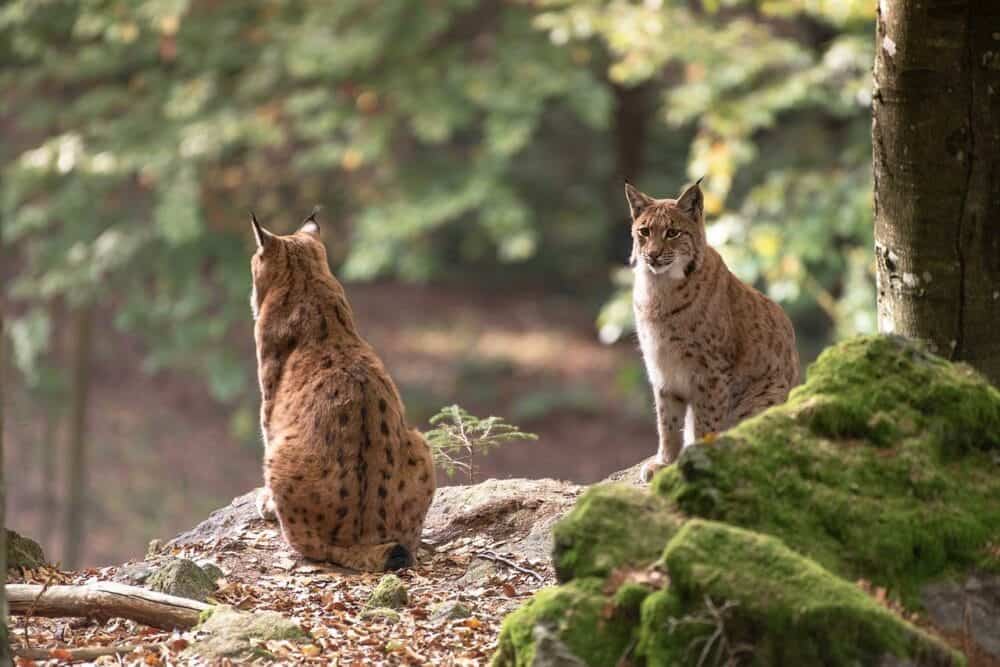
Keeping Wild Cats Away From Human Dwellings
The California Department of Wildlife suggests several steps those living in wild cat (especially mountain lion) territory can take to keep the animals away from their homes and animals.
- Keep pet food stored indoors
- Don’t let pets outside at night, dawn, or dusk
- Provide sturdy shelters for livestock, especially at night
- Keep brush trimmed to eliminate hiding places for wild cats
- Install motion-activated lights so wild cats can’t sneak up unnoticed
Also, deer-proofing your property can help keep the mountain lion’s primary food source away, reducing the chances that wild cats will hang around.
Staying Safe During Outdoor Recreation
For those who enjoy hiking and other outdoor activities, the following tips can help keep you safe:
- Don’t hike or bike alone through known wild cat habitats, especially at dawn, dusk, or nighttime
- When hiking, stay on trails and keep children and pets close
- Never approach or corner a wild cat if you see one
- If a mountain lion or other wild cat approaches, don’t run, crouch, or bend over. Face the animal, make noise, and try to look bigger
- Stay calm and alert at all times

Final Thoughts
There you have it! California has three wild cats that you may or may not see. Truthfully, you probably won’t see these animals unless you’re out in bear country. But like we said earlier, though, it’s not impossible! These cats roam all over the US and into Canada and Mexico. You never know what you’ll come across one day.
Featured Image Credit: 3031830, Pixabay
